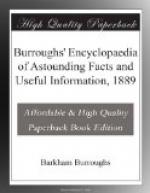In the handwriting, as in other things, beauty is largely a matter of taste and education. To the man of business, the most beautiful handwriting is that which is written with ease, and expresses plainly and neatly the thought of the writer. To the professional or artistic taste, while such a hand may be regarded as “a good business hand,” it would not be considered as beautiful, because it conforms to no rule as to proportion, shade, and spacing. In the practical art of writing, it is not very unfair to measure its beauty largely by its utility.
[Illustration: Movement]
Movement.
Finger movement, or writing by the use of the fingers as the motive power, is entirely inadequate to the requirements of business. The fingers soon become tired, the hand becomes cramped, the writing shows a labored effort, and lacks freedom and ease so essential to good business penmanship. In the office or counting-room, where the clerk or correspondent must write from morning till night, the finger movement of course cannot be used.
What is designated by writing teachers as the Whole Arm, or Free Arm Movement, in which the arm is lifted free from the desk and completes the letter with a dash or a swoop, is necessary in ornamental penmanship and flourishing, but has no place in a practical style of business writing. The man of business would hardly stop, in the midst of his writing, to raise the arm, and execute an “off-hand capital,” while customers are waiting.
But adapted to the practical purposes of business is the muscular movement, in which the arm moves freely on the muscles below the elbow, and in cases of precise writing, or in the more extended letters, such as f, is assisted by a slight movement of the fingers. The third and fourth fingers may remain stationary on the paper, and be moved from time to time, or between words, where careful and accurate writing is desired, but in more rapid, free and flowing penmanship, the fingers should slide over the paper.
MOVEMENT EXERCISES.
Having everything in readiness, the student may begin his practice on movement exercises, the object of which is to obtain control of the pen and train the muscles. Circular motion, as in the capital O, reversed as in the capital W, vertical movement as in f, long s and capital J, and the lateral motion as in small letters, must each be practiced in order to be able to move the pen in any direction, up, down, or sidewise.
The simplest exercise in movement. Try to follow around in the same line as nearly as possible. Do not shade.
[Illustration: O O 8]
The same exercise, only with ovals drawn out and and slight shade added to each down stroke.
[Illustration: (coils)]
Sides of ovals should be even, forming as nearly a straight line as possible. Reverse the movement as in third form.




